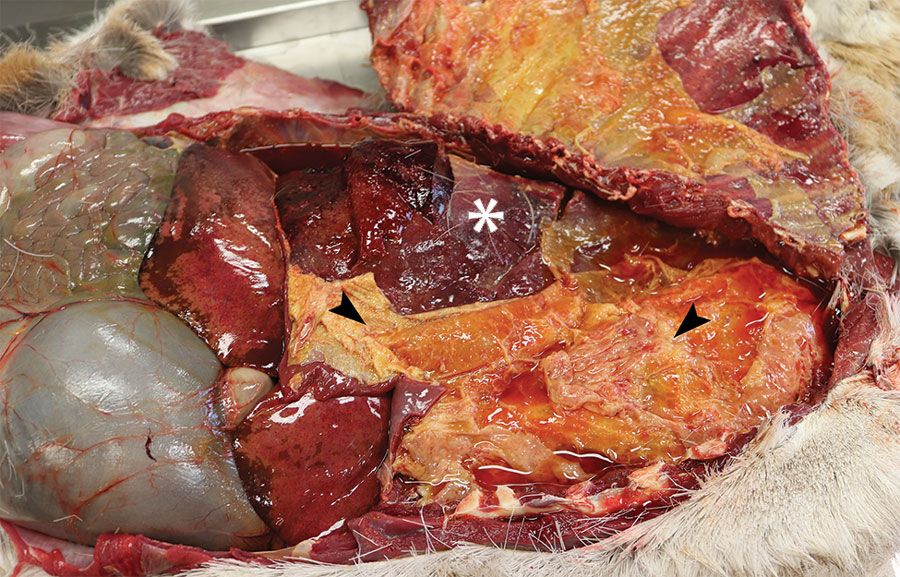Volume 26, Number 12—December 2020
Synopsis
Mycoplasma bovis Infections in Free-Ranging Pronghorn, Wyoming, USA
Figure 2

Figure 2. Free-ranging pronghorn infected with Mycoplasma bovis with severe fibrinous pleuropneumonia, Wyoming, USA, February–April 2019. Open thoracic cavity with ribs reflected reveals abundant fibrin on the visceral pleura (arrowhead) and consolidated lungs (asterisk).
Page created: September 30, 2020
Page updated: November 19, 2020
Page reviewed: November 19, 2020
The conclusions, findings, and opinions expressed by authors contributing to this journal do not necessarily reflect the official position of the U.S. Department of Health and Human Services, the Public Health Service, the Centers for Disease Control and Prevention, or the authors' affiliated institutions. Use of trade names is for identification only and does not imply endorsement by any of the groups named above.